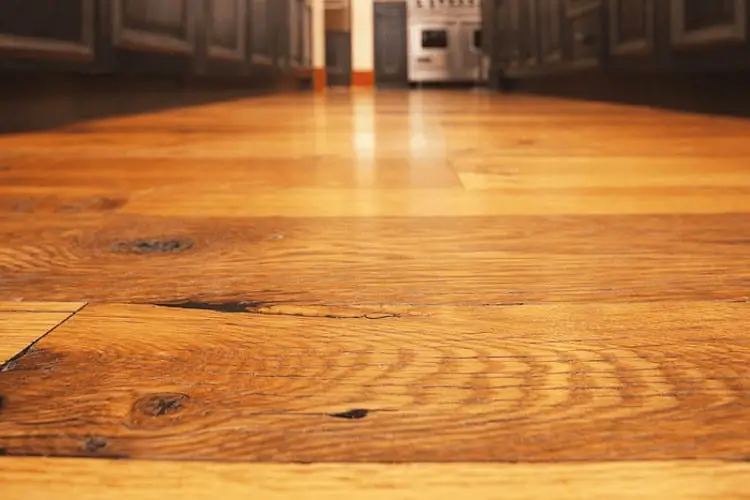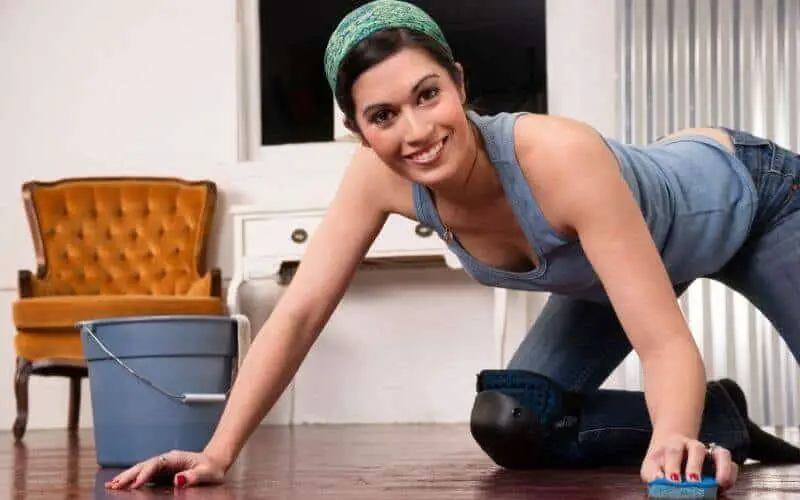It can be challenging to clean old damaged wood floors; it depends on the extent of the damage and the type of finish used on the wood floor.
On the flip side, healthy and brilliant wood floors look nice and they provide warmth and comfort to your home or office as the case may be. To bridge the gap, in this article, we will talk about how to clean old damaged wood floors.
Many people use homemade wood floor cleaners to clean their floors. These homemade wood floor cleaners are efficient and easy to use. They are just as efficient in cleaning wood floors as commercial products do, and they are cheaply available.
Homemade wood floor cleaners include vinegar, olive oil, lavender, baking soda and lemon. These home remedies remain the best choice in cleaning wood floors of any type of finish because they don’t have harmful or toxic odor which are found in many commercial cleaning products; hence, homemade wood floor cleaners are eco-friendly.
How to Clean Old Damaged Wood Floor
Table of Contents
Using Diluted Vinegar
Vinegar is an acid. When vinegar is mixed with water, its acidity is drastically reduced, forming a solution that is efficient for cleaning old damaged wood floors. While Vinegar have lots of uses, cleaning of wood floors ins’t left out.
The solution of vinegar and water cuts through grime, dirt and debris, and leaves a clean wood floor. Make sure you sweep the floor clean before applying vinegar to remove, dirt/stains from your old damaged wood floor.
Proceed to mix vinegar and warm water by adding half a cup of white vinegar to half a bucket of warm water; stir thoroughly. To get a pleasant odor, you can add at least five drops of olive oil or lavender.
Now, dip a mop into the solution, and then wring excess solution out of the mop before using it. Wringing out excess solution is important because excess water on wood can damage the wood.
Mop the whole floor and see that all debris and dirt is removed. Along the line, if the solution you are using appears dirty, you will have to replace it with a new one and continue mopping.
Finally, after mopping, check the floor for water pooling. If there are traces of water left on some spots of the floor, make use of a clean, dry and absorbent towel to absorb them.
Using Diluted Lemon Juice
Get olive oil, warm water and lemon juice in a bucket and stir the mixture thoroughly. Lemon is for removing grime and dirt from the floor while olive oil is to shine the floor.
Dip a cotton mop in the solution, and then squeeze the mop to prevent leaving water pools on the floor. To have a better control of the solution, you can make use of a spray bottle and a cloth mop.
When you are done moping the floor, use a clean and dry towel to absorb excess water from the floor. Finally, let floor air dry.
Read: Do rug pad damage wood floors?
Using Vinegar and Baking Soda
Mix baking soda and vinegar using ratio 1:1, form a paste. This paste is very efficient in removing pet stains, marks, dark spots and all kinds of stains without you having to scrub the floor.
Use a cloth or sponge to apply the paste on the stain. Let the paste stay on the stained spot for some time until it dries. After the paste is dried, wipe the spot to clear the stain completely. Check out a complete guide on how to clean bamboo floor with vinegar
Cleaning Wood Floor Finish
The finish of wood floors is the part of the wood that accumulates debris and dirt. That been said, regular cleaning is the only guarantee for a long lasting wood floor. There are many ways of salvaging or refurbishing old damaged wood floors.
Holes on the floor can be plugged. Insect-infected boards, termite-damaged planks and delaminated strips can be replaced. Squeaky floors can be adjusted and tightened with dry lubricants or nails, at least for the time being.
To give old damaged wood floor a new luster appearance, you can completely refinish the floor. Finishing goes beyond making the wood floor look brilliant; it protects and seals the hardwood’s open pores.
If these open pores are left exposed, dirt and water will be absorbed into the wood floor and the floor will be more likely to be dented and scratched.
It is normal for wood floors to show signs of wear like dents, heel scuffs, stains and scratches. Most of these marks can be easily removed with steel wool or sandpaper. Immediately the stain is removed, the area should be protected again to match the rest of the floor.
If the wood itself requires sanding, apply a wood stain that matches the color of the remaining part of the floor and apply a wax or polyurethane coat finish.
To maintain the wood floor, make use of a floor polish that corresponds with the type of finish for the floor. Polyurethane floors need a wood-floor polish while wax floors require a wax finish.
Furthermore, you can restore the beauty of an old damaged wood floor by recoating it. Recoating means adding a new layer of protection that will correspond with and adhere to the previous finish. Recoating is safer, faster and easier than refinishing.
Additionally, you can improve the colour and brilliance of your old damaged wood floor by making a spray consisting of a cup of vodka, olive oil and 15 drops of essential oil. For scent, use lemongrass and lemon.
Starting with small areas, spray the floor with the mixture and use a dry microfiber mop to smoothly rub the floor.
Read: Best floor wax for hardwood floor
How to maintain your old hardwood floor
There are some preventive measures needed to be taken to avoid damaging your hard wood floor. This first one is sweeping your floor daily with a soft broom or microfiber mob.
Mop the floor for at least once a month. In the process of cleaning your old hardwood floor, avoid using harsh chemicals such as ammonia. Most importantly, avoid covering a hardwood floor with water to avoid damaging the floor.
In the case of spills from coffee, juice or inks, try to wipe them off as soon as possible using a slightly damp mop.
Conclusion
Now that you have learnt how to clean old damaged wood floors, you shouldn’t have any challenge maintaining a brilliant and shiny wood floor in your home. Adhere to all maintenance instructions: sweep regularly, clean spills immediately and never allow your wood floor to be soaked with water.
Moisture is the main enemy of wood floors, avoid it getting on your wood floor and clean it up immediately, if it gets on the floor. Finally, make sure that any mop you use on your wood floor is appropriate for cleaning wood floors.
Having read this, I’m sure you’ve got a better insight into how to clean old damaged wood floors. Over to you, what method have you used to clean your hardwood floor?
Oh and don’t forget to share this post, there are a lot out there looking for tips on how to clean old damaged wood floors, this post will save them the stress.


